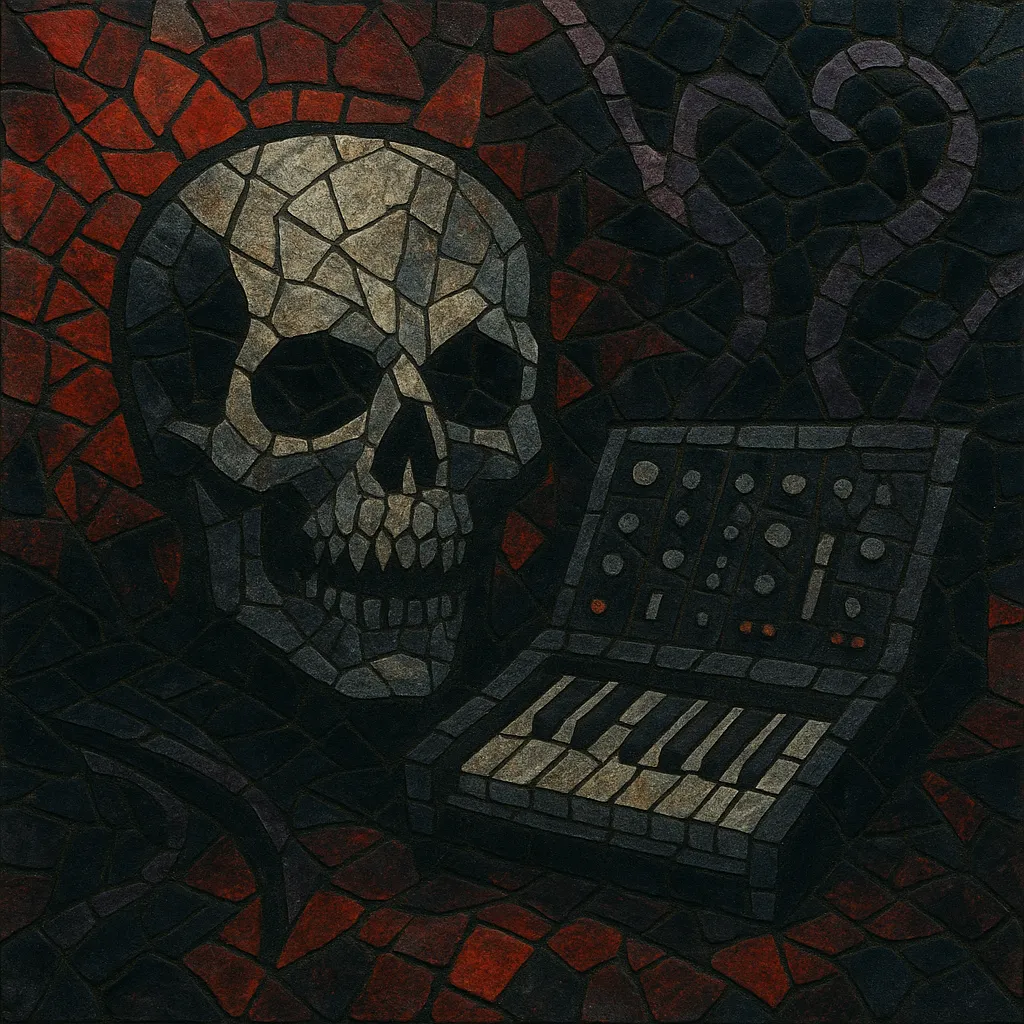
Horror synth is a dark, cinematic electronic style that draws heavily from 1970s–1980s horror film scores and analog synthesizer aesthetics. It emphasizes ominous arpeggios, minor-key ostinati, and brooding pads that evoke suspense, dread, and retro VHS-era atmosphere.
While it overlaps with synthwave, horror synth is noticeably darker and more aggressive, often incorporating industrial textures, dissonant intervals, and sound-design cues taken from classic slasher and giallo soundtracks. The music typically features vintage drum machine grooves, tape-like saturation, and motif-driven themes that feel like cues to an unseen film.
Horror synth’s DNA comes from the synth-heavy scores of classic horror and thriller cinema. Composers such as John Carpenter (often with Alan Howarth), Goblin (for Dario Argento), Tangerine Dream, and Fabio Frizzi popularized lean, motif-led themes built from analog arpeggios, pulsing bass, and stark drum machine patterns. These scores established the language: minor keys, ominous ostinati, tritone tension, and a tactile, analog timbre.
As mainstream film scoring shifted, these sounds persisted in cult circles. Boutique labels began reissuing vinyl soundtracks, and a growing collector culture kept interest alive. Acts like Zombi and Umberto revived the aesthetic in live and studio settings, directly channeling 70s/80s horror cues through modern gear.
The broader synthwave revival provided a platform for a darker branch often labeled horror synth (overlapping with what many call darksynth). Artists such as Carpenter Brut, Perturbator, GosT, Gatekeeper, and S U R V I V E amplified the menace with heavier drums, distorted basslines, and industrial touches. Online communities, labels, and YouTube channels (e.g., soundtrack reissue labels, NewRetroWave-affiliated outlets) helped formalize the scene, while TV and games (e.g., Stranger Things, neo-retro titles) normalized the style in popular culture.
Horror synth remains a motif-driven, cinematic microcosm within the synthwave/dark electronic world. It balances nostalgia with modern production, inspiring film, game, and trailer composers and sustaining a dedicated live and club circuit.

